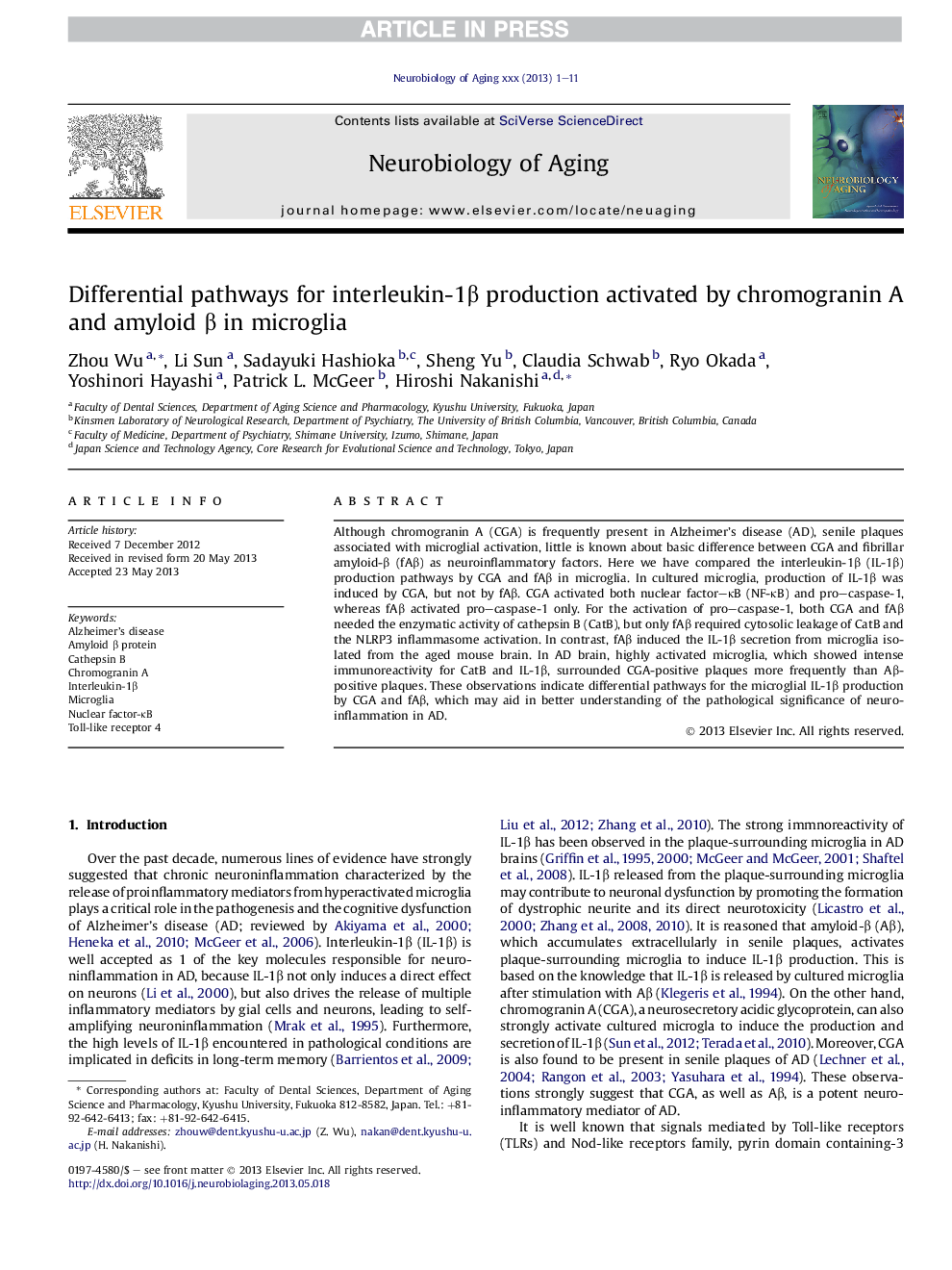| Article ID | Journal | Published Year | Pages | File Type |
|---|---|---|---|---|
| 6806692 | Neurobiology of Aging | 2013 | 11 Pages |
Abstract
Although chromogranin A (CGA) is frequently present in Alzheimer's disease (AD), senile plaques associated with microglial activation, little is known about basic difference between CGA and fibrillar amyloid-β (fAβ) as neuroinflammatory factors. Here we have compared the interleukin-1β (IL-1β) production pathways by CGA and fAβ in microglia. In cultured microglia, production of IL-1β was induced by CGA, but not by fAβ. CGA activated both nuclear factor-κB (NF-κB) and pro-caspase-1, whereas fAβ activated pro-caspase-1 only. For the activation of pro-caspase-1, both CGA and fAβ needed the enzymatic activity of cathepsin B (CatB), but only fAβ required cytosolic leakage of CatB and the NLRP3 inflammasome activation. In contrast, fAβ induced the IL-1β secretion from microglia isolated from the aged mouse brain. In AD brain, highly activated microglia, which showed intense immunoreactivity for CatB and IL-1β, surrounded CGA-positive plaques more frequently than Aβ-positive plaques. These observations indicate differential pathways for the microglial IL-1β production by CGA and fAβ, which may aid in better understanding of the pathological significance of neuroinflammation in AD.
Keywords
Related Topics
Life Sciences
Biochemistry, Genetics and Molecular Biology
Ageing
Authors
Zhou Wu, Li Sun, Sadayuki Hashioka, Sheng Yu, Claudia Schwab, Ryo Okada, Yoshinori Hayashi, Patrick L. McGeer, Hiroshi Nakanishi,
